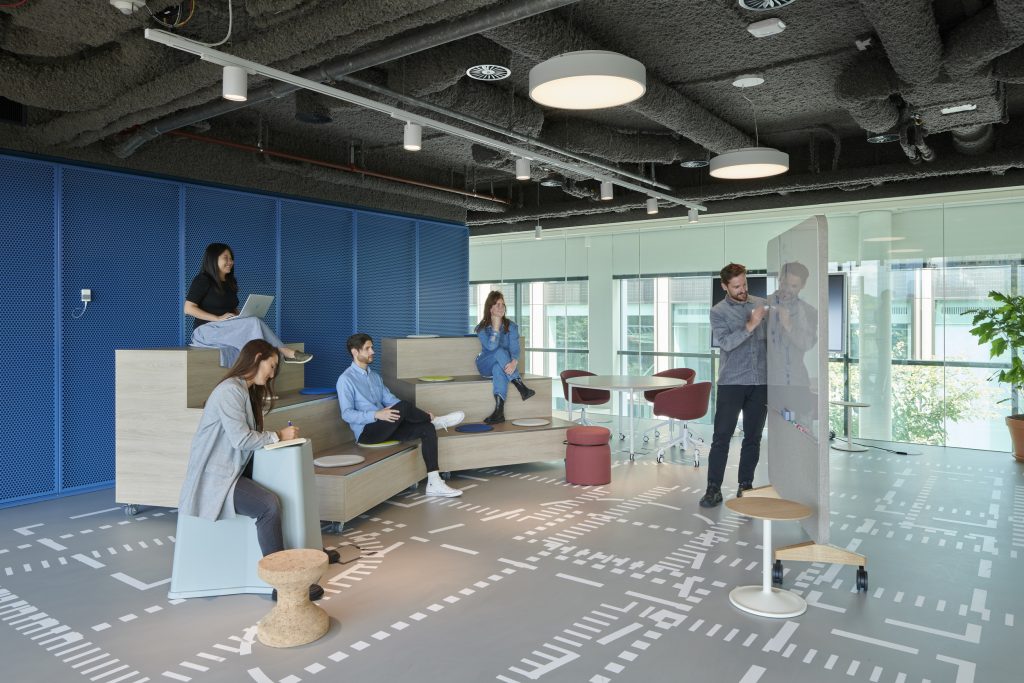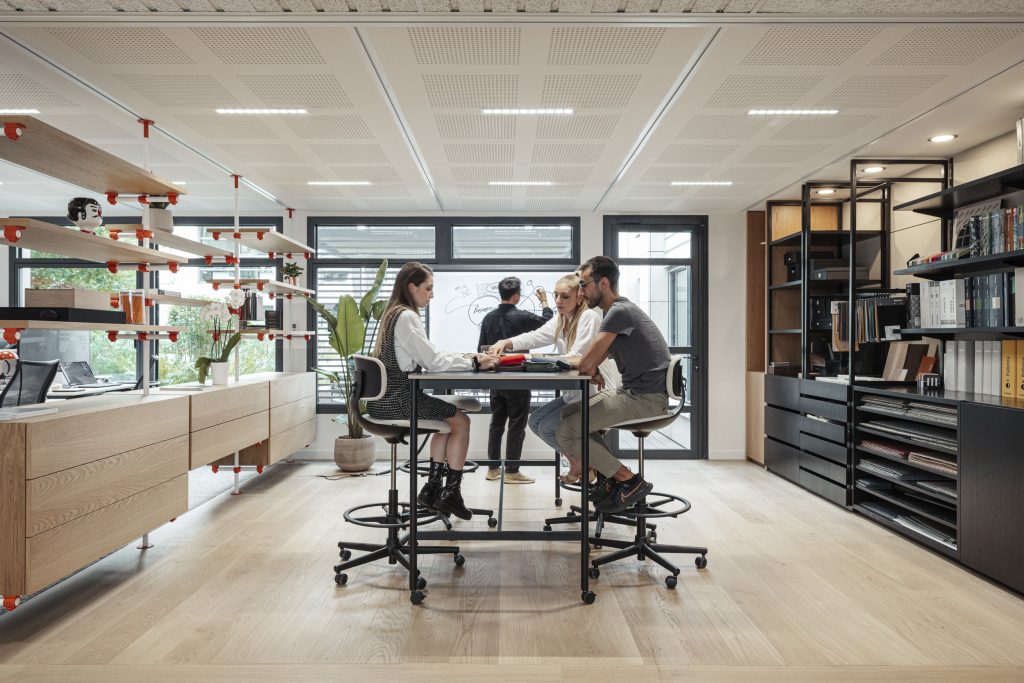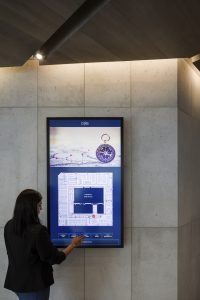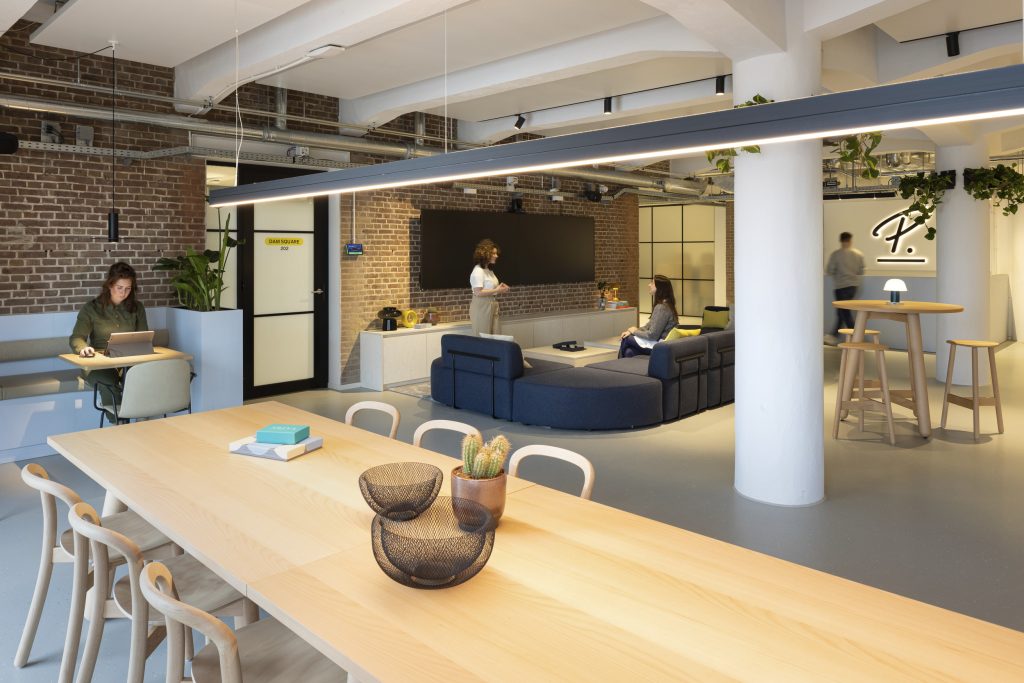In the dynamic modern workplace, friction arises when evolving needs aren’t met, impacting productivity and job satisfaction; M Moser advocates for iterative changes, data-driven design, and behavioral nudges to create a fluid, frictionless work environment.
The notion of a ‘frictionless work experience’ can be associated with recognizing that friction often arises when evolving needs are not met. In the dynamic landscape of the modern workplace, employees’ needs and expectations are in constant flux. When the physical environment, technology and infrastructure, and organizational systems fail to adapt in response to these evolving demands, friction inevitably arises.
This friction can manifest in various ways – from employees feeling constrained by rigid office layouts to processes that hinder rather than facilitate productivity. It can also result in a decrease in overall job satisfaction and interrupt the organization’s ability to attract and retain top talent.
It’s evident that a one-size-fits-all approach to office design projects is no longer viable. However, we believe that to achieve a new level of success, the workplace must continue to evolve into a fluid ecosystem in which space, technology and policy holistically adapt to the ever-changing needs of organizations.
Navigating Change with Flexibility and Insight
At M Moser, our adaptive workplace methodology envisions workplaces as dynamic entities capable of seamless adaptation to evolving needs and circumstances. This approach underscores the value of iterative changes, prompting organizations to regularly evaluate and refine their workspace using real-world usage data and employee input. Emphasizing flexibility and responsiveness, modern companies can invest in spatial design, data analytics and amenities that strike a balance between employee and organizational needs, thereby minimizing friction overall.
The significance lies in the ability to accommodate the changing needs of teams and the evolving priorities of organisations. As work dynamics shift, it becomes essential for the workplace environment to adapt accordingly, fostering an atmosphere that supports innovation, collaboration and productivity. By recognizing and embracing these changes, organisations can better position themselves to meet the evolving demands of the modern workforce and remain competitive.
– Grant Christofely, Associate Director – Workplace Strategy

Unlocking Workplace Potential
For example, by integrating modular, less permanent structures and embracing adaptive reuse of furniture and systems, organizations facilitate effortless reconfiguration and scalability. This means that as an organization’s needs evolve – whether due to growth, changes in work patterns, or new technologies – the workspace can evolve with them. This adaptability reduces the friction associated with workspace constraints and promotes an environment where employees can be their most productive and creative.

Moreover, the use of workplace sensors and data analytics enables organizations to gain a deeper understanding of how their spaces are utilized. This data-driven approach ensures that design decisions are based on real evidence, reducing the likelihood of wasted resources and optimizing the workplace for maximum efficiency and employee satisfaction.

“In our M Moser locations, we’re actively exploring innovative design concepts, refining our process, and integrating new technology systems. This includes both our current offices and future “Living Labs” designs. Whether imagining future locations or retrofitting existing, we prioritize adaptability by incorporating modular furniture systems, hackable designs, user choice, adaptive reuse and benchmarking.
Each Living Lab tracks and records utilization, allowing us to promptly analyze and respond to usage patterns and occupancy trends in real-time. Our in-house teams offer insights for minor adjustments, optimization or behavioral changes to enhance the workplace experience continually. Crucially, we benchmark the data, comparing historical or regional trends to consistently learn from successful strategies and user satisfaction.”
– Frances Gain, Senior Associate – Workplace Strategy
Shaping Behavior for Success
Simultaneously, an adaptable workplace that prioritizes its people can influence desired behaviors by minimizing or eliminating obstacles to positive conduct. This concept is commonly referred to as ‘nudge theory.’ For instance, if encouraging increased collaboration among staff is a goal, implementing settings conducive to collaboration can effectively nudge that behavior. Similarly, if the aim is to enhance staff focus during work tasks, removing any hindrances to finding a quiet work area can facilitate that behavior. Likewise, promoting employee health can involve making unhealthy choices more difficult, such as designing appealing staircases or facilitating healthy choices by providing amenities like fresh fruit. By employing these strategies, organizations can proactively shape workplace behaviors in line with their objectives while fostering a conducive and supportive environment for their employees.

A Holistic Approach
In summary, reducing friction in the work experience necessitates recognizing that evolving needs must be met through adaptive design, innovative methodologies and continuous measurement. Yet, it’s not just one or the other; it’s about looking at these systems together. Taking a holistic approach to an adaptive workplace and systems of design offer a blueprint for creating a work environment that not only accommodates change but thrives on it – ultimately supporting a truly frictionless work experience that benefits both employees and organizations alike.
Article Resources
M Moser’s Adaptive Workplace Methodology
“What Will You Do With All That Furniture” Interview with Reseat (reuse of furniture)
Modular and Mobile Furniture in WDM’s Marketplace
Want to read more insights from Frances Gain?
Revolutionizing Workspaces: Embracing Neurodiversity, Sensory Design, and Evocative Colors for an Inclusive Future



